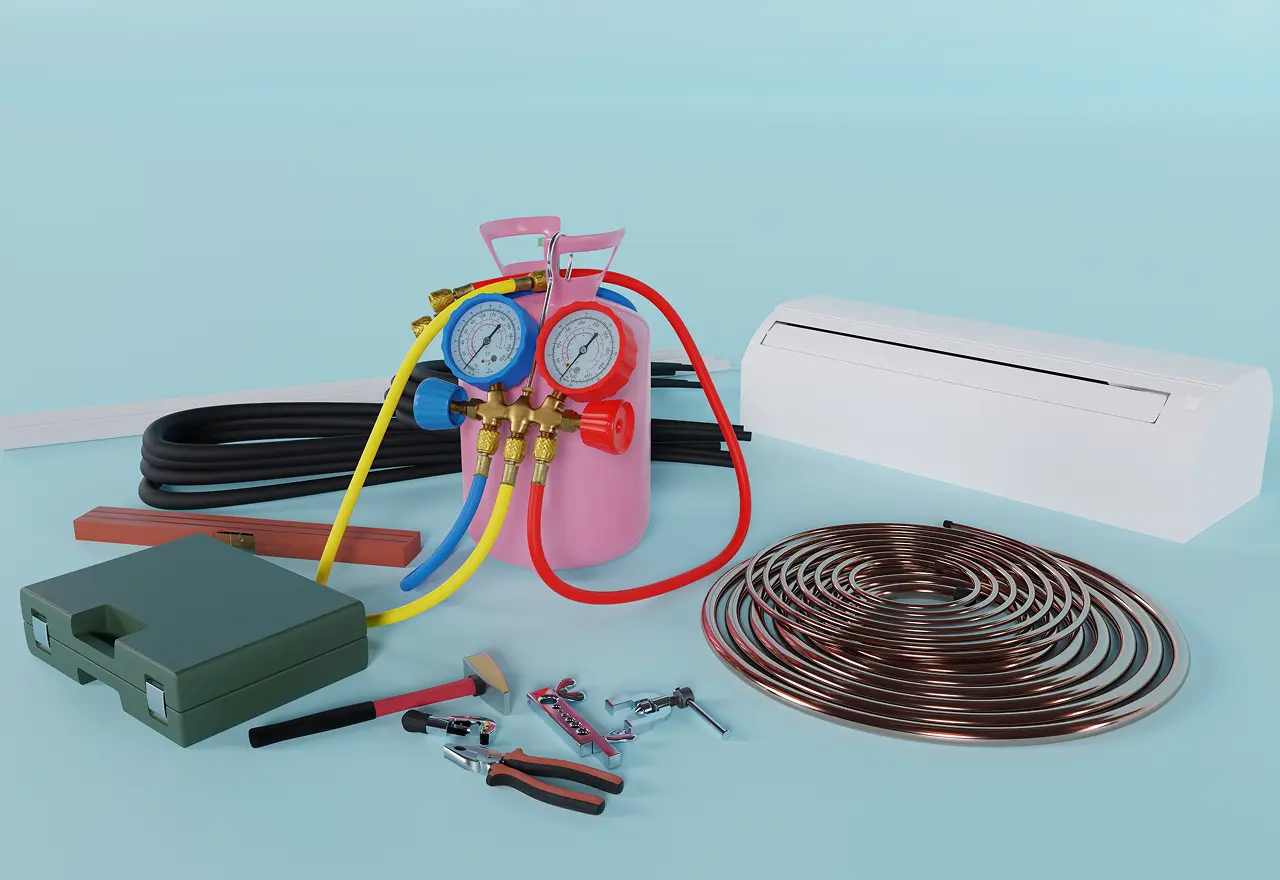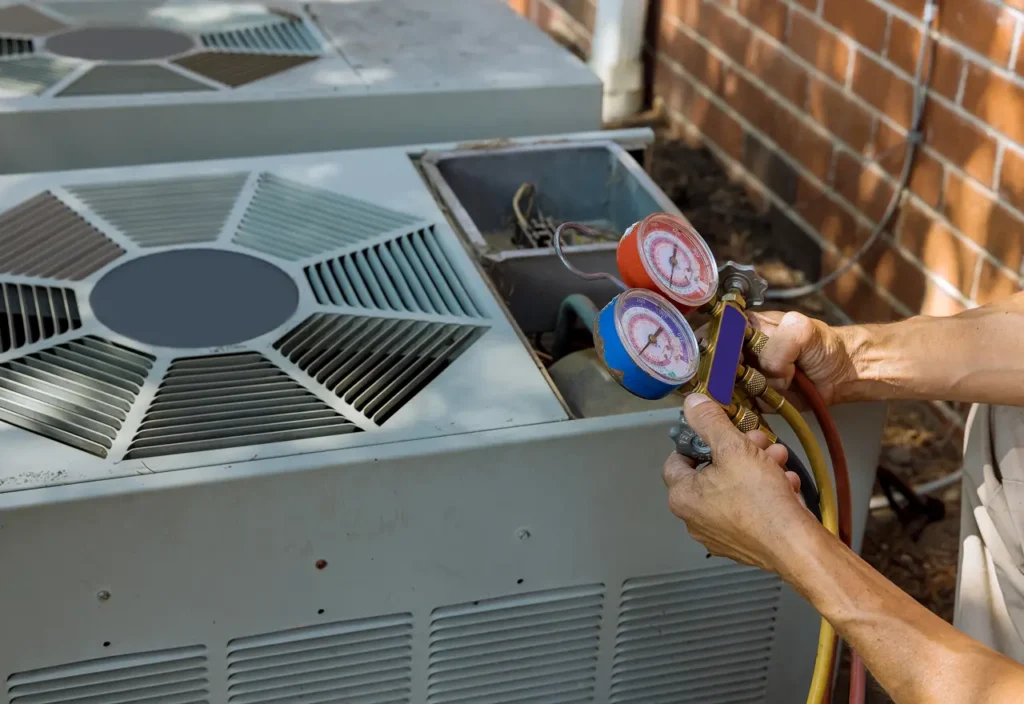
Essential Tools for HVAC Technicians: The Ultimate HVAC Tools Every HVAC technician needs the right HVAC Tools perform installations, repairs and maintenance efficiently and safely. This HVAC tools will guide you through the best HVAC tools—from hand tools to digital diagnostics—and help you build a fully equipped service bag.
1. Hand and Power Tools: Foundations of Any HVAC Tools Kit
A solid set of hvac service tools starts with reliable hand tools and a versatile drill:
- Nut Drivers & Screwdrivers: A full range of nut drivers (¼″–½″) and insulated screwdrivers lets you handle electrical panels, blower assemblies, and ductwork fast.
- Pliers & Cutters: Combination pliers, hose cutters, and tin snips make bending, cutting, and shaping copper tubing a breeze.
- Cordless Drill/Driver: Look for a 20 V+ brushless drill with clutch settings and extra batteries—ideal for installing panels, anchors, and sheet‐metal fasteners on the fly.
Tip: Store your best HVAC tools in a rugged, wheeled tool bag to keep everything accessible and organized.
2. Diagnostic and Measurement Tools: Pinpoint Problems Quickly
Precise measurements are key to diagnosing system issues:
- Digital Manifold Gauges: High-accuracy gauges (0–800 PSI) paired with refrigerant temperature probes let you verify pressure, superheat, and subcooling in real time.
- Multimeter: A true‐RMS meter with capacitance and temperature functions helps test voltage, current, resistance, and temperature—all in one tool.
- Leak Detector: Ultrasonic and refrigerant‐sniffing detectors will flag even the smallest Freon leaks before they become costly repairs.
- Infrared Thermometer: Non‐contact thermometers with laser targeting let you scan coils, ductwork, and motors for hotspots or airflow issues.
Each item on this hvac tools ensures you can diagnose electrical, refrigerant, and airflow faults accurately.
3. Specialty HVAC Service Tools: Beyond the Basics
Equip yourself with these niche tools to tackle advanced tasks:
- Vacuum Pump & Recovery Machine: A 6 CFM vacuum pump paired with a recovery unit ensures complete evacuation of moisture and safe capture of refrigerant.
- Flaring and Swaging Kits: For custom copper lines, a double‐flaring kit and tubing swager are indispensable.
- Brazing Torch: An oxy-acetylene or MAPP gas torch lets you join copper fittings securely—look for models with adjustable flame control.
- Coil Fin Comb: Straightens bent fins on evaporator and condenser coils, restoring optimal airflow and heat transfer.
Including these hvac service tools elevates your ability to handle installations, retrofits, and complex repairs.

4. Software Tools & Mobile Apps: Streamline Your Workflow
Modern HVAC technicians rely on digital tools to manage jobs:
- Field Service App: Choose a cloud-based app (ideally integrated with Optsy FSM) to view schedules, update work orders, and collect customer signatures from your tablet.
- Calculation Apps: Refrigeration superheat/subcool calculators, duct-sizing apps, and psychrometer tools speed up on-site calculations.
- Inventory Management: Track parts usage and reordering levels in real time—so you never leave a job without needed components.
Leveraging software alongside your physical tools creates a seamless service experience.
5. Safety Gear & PPE: Protect Yourself on the Job
Never compromise on safety when using powerful HVAC tools:
- Safety Glasses & Gloves: ANSI‐rated eyewear and cut-resistant gloves shield you from debris, refrigerant, and sharp edges.
- Respirator Mask: A half-face respirator with P100 filters protects against dust, fumes, and chemical vapors.
- Ear Protection: High-noise environments (like rooftop units) require ear muffs or plugs to guard your hearing.
Proper PPE is as essential as any tool in your HVAC tools.
Conclusion
Building the right toolkit—combining hand tools, diagnostic instruments, specialty service tools, software, and PPE—is the foundation of any successful HVAC technician’s career. By stocking your bag with these essential HVAC tools, you’ll be better equipped to diagnose issues swiftly, perform quality installations, and deliver top-tier service that keeps customers coming back. Start refining your toolkit today—and watch your efficiency and reputation grow.
If you’re a new HVAC technician and need guidance on which HVAC tools to get, check out this helpful article for expert advice and recommendations.
